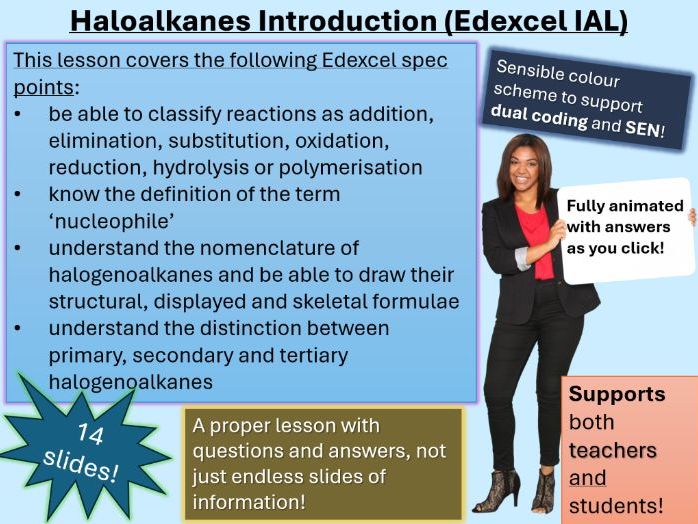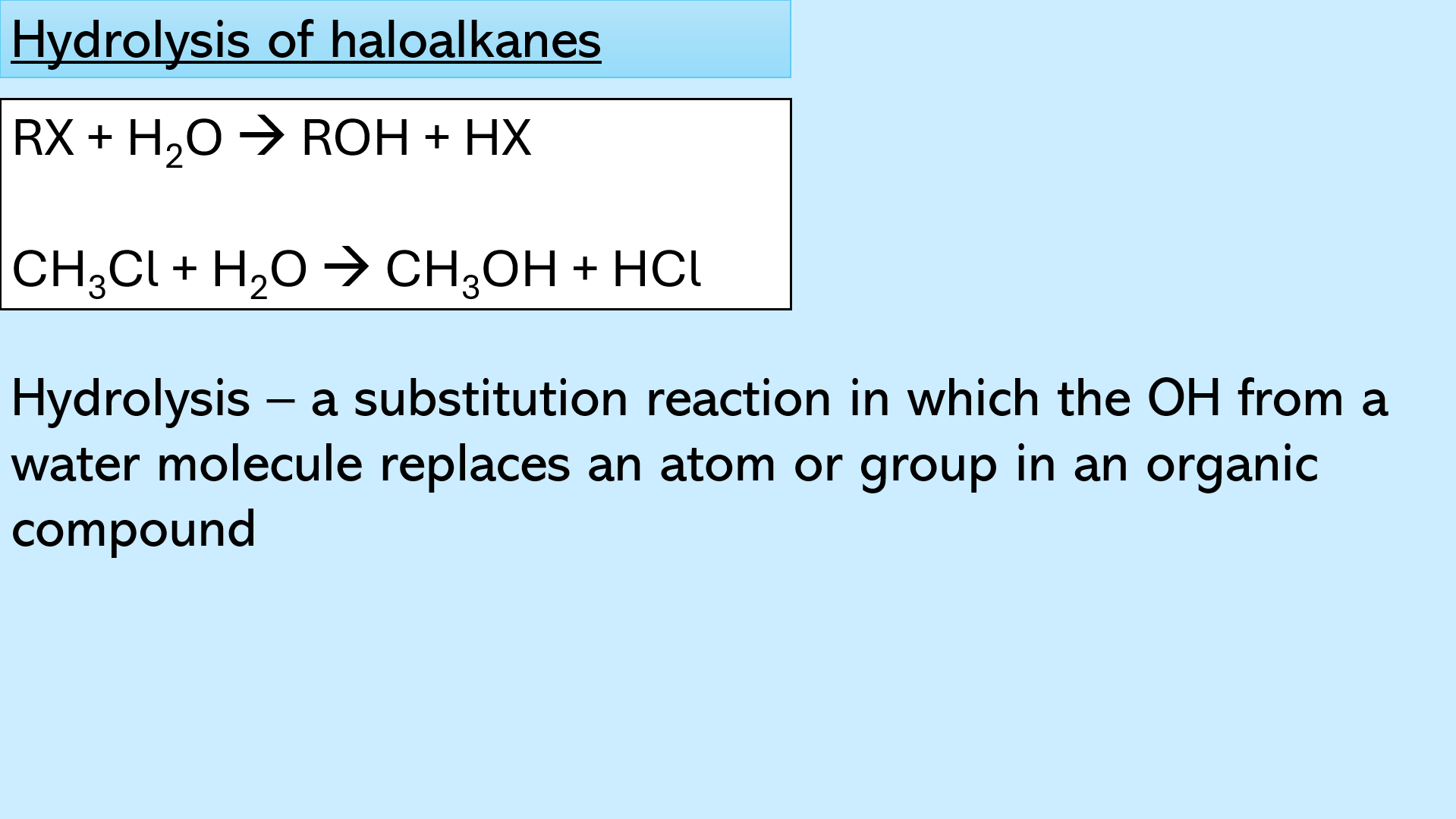

What is a primary, secondary and tertiary halogenoalkane? What is a nucleophile? What is the skeletal formula of 1-bromo-2,2-dimethylpropane? Why are haloalkanes reactive? All this and more covered in this comprehensive lesson with questions and answers! This is a Year 12 A level lesson for Edexcel International Unit 2 – WCH12, but it can also be used for all UK exam boards. All the slides in this lesson are fully animated and include answers to every mini plenary question and exam question. The breakdown of the slides (which are best opened on Microsoft PowerPoint) is as follows:
Slide 1 - Title and 5-minute starter. The starter is a grid of four questions entitled ‘last week, last lesson, today’s learning and future learning’. Use this generic slide for all of your lessons by simply changing the questions and the answers each time.
Slide 2 - Lesson objectives (see thumbnail image)
Slide 3 – A recap, which also serves as a hinge moment: name 2 mechanisms which lead to the formation of a Haloalkane
Slides 4 – 7: students given a table to complete. There are blanks in random places for students to fill in either the formula or the IUPAC name. Print slides 5 - 6 so that students do not have to waste time copying the table from the board.
Slide 8 - a mini whiteboard challenge question, in which students are asked to draw the skeletal formula of 2-bromobutane and 1-bromo-2,2-dimethylpropane
Slide 9 - this section is about the classification of halogenoalkanes, namely primary secondary and tertiary. There is also a hinge question: what makes haloalkanes reactive?
Slide 10 - The answer to the hinge question on the previous slide is given here. The definition of nucleophile is also presented to students
Slide 11 - the hydrolysis of halogenoalkanes is explained here with the general equation and a specific, chemical equation using chloromethane as the example. The definition of hydrolysis is also given
Slide 12 – 14: ALT (Applied Learning Task): a series of questions to test students’ understanding of the lesson. Answers animate on to the screen when you click. Print slides 13 – 14 so that students can have the questions in front of them
Key learning outcomes:
Classify haloalkanes and identify functional groups
Explain haloalkane reactivity using bond polarity
Describe hydrolysis as a nucleophilic substitution reaction
Interpret differences in reactivity based on halogen type and structure
This fully animated lesson is perfect for classroom teaching, independent study, or flipped learning, with structured checkpoints to support students through unfamiliar terminology and mechanistic thinking.
If this resource saves you time or supports your teaching, please consider leaving a positive review. Thank you for supporting Lifeboat Teachers!
Something went wrong, please try again later.
This resource hasn't been reviewed yet
To ensure quality for our reviews, only customers who have purchased this resource can review it
to let us know if it violates our terms and conditions.
Our customer service team will review your report and will be in touch.